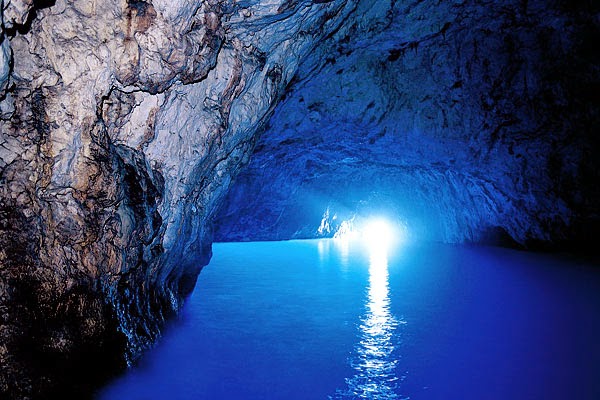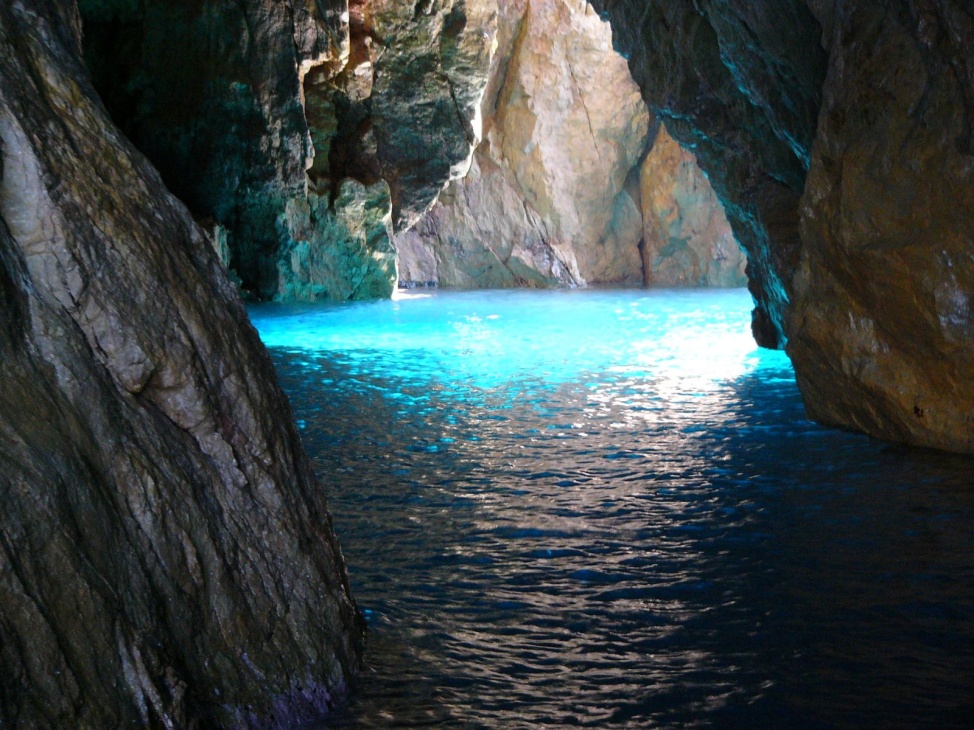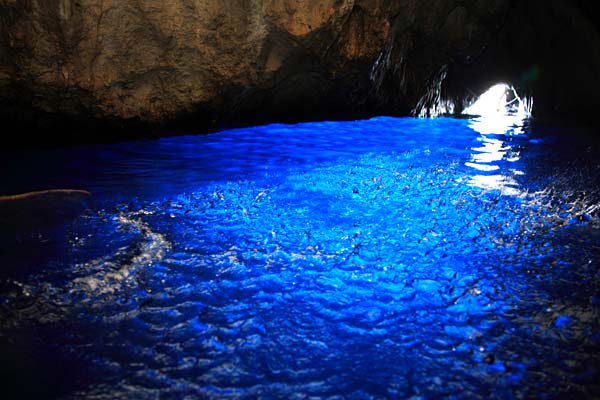
The Blue Grotto (Italian: Grotta Azzurra) is a sea cave on the coast of the island of Capri, southern Italy. Sunlight, passing through an underwater cavity and shining through the seawater, creates a blue reflection that illuminates the cavern. The cave extends some 50 metres into the cliff at the surface, and is about 150 metres deep, with a sandy bottom. The cave is 60 meters long and 25 meters wide. The cave mouth is two meters wide and roughly one meter high. For this reason, entrance into the grotto can only be achieved when tides are low and the sea is calm. Without calm seas and low tides, the grotto becomes inaccessible, as the 1-meter entrance is impossible to pass. To enter the grotto, visitors must lay flat on the bottom of a small 4-person rowboat. The oarsman then uses a metal chain attached to the cave walls to guide the boat inside the grotto. Swimming in the grotto is forbidden, both for safety reasons and to preserve water clarity. The Blue Grotto is one of several sea caves, worldwide, that is flooded with a brilliant blue or emerald light. The quality and nature of the color in each cave is determined by the particular lighting conditions in that particular cave.
In the case of the Blue Grotto, the light comes from two sources. One is a small hole in the cave wall, precisely at the waterline, that is a meter and half in diameter. This hole is barely large enough to admit a tiny rowboat, and is used as the entranceway. In photographs taken from within the cave, the above-water half of this hole appears as a spot of brilliant white light. The second source of light is a second hole, with a surface area about ten times as large as the first, which lies directly below the entranceway, separated from it by a bar of rock between one and two meters thick. Much less light, per square meter, is able to enter through the lower opening, but its large size ensures that it is, in practice, the primary source of light.
As light passes through the water into the cave, red reflections are filtered out and only blue light enters the cave. Objects placed in the water of the grotto famously appear silver. This is caused by tiny bubbles, which cover the outside of the object when they are placed underwater. The bubbles cause the light to refract differently than it does from the surrounding water and gives off the silver effect.
In part because of the dazzling effect of the light from the above-water opening, it is impossible for a visitor who is in one of the rowboats to identify the shape of the larger hole, the outline of the bar that separates the two holes, or even the nature of the light-source, other than a general awareness that the light is coming up from underneath, and that the water in the cave is more light-filled than the air. A visitor who places a hand in the water can see it “glow” eerily in this light.



